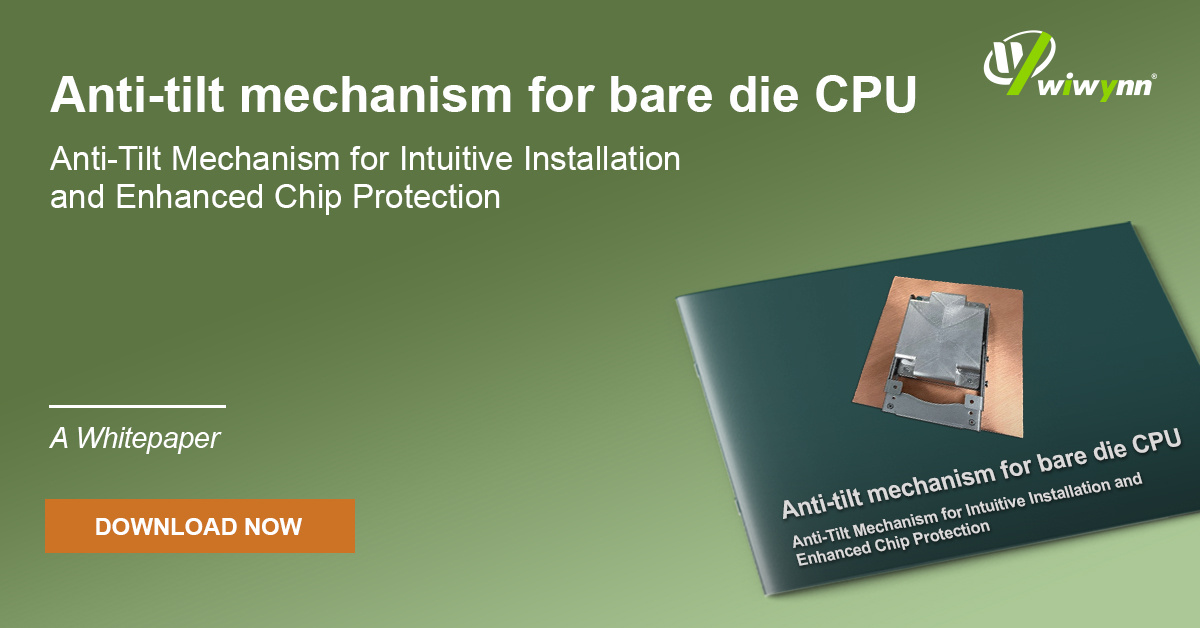White Paper: Platform Root of Trust Application on Intel Server
The white paper focuses on Wiwynn's implementation of Intel's Platform Firmware Resilience (PFR) in server systems, based on the NIST SP 800-193...

The bare die CPU, as an innovative product design, offers significant advantages over traditional designs across various stages, including product application, assembly, and production.
Traditionally, heat sinks are secured by tightening screws one by one at each corner. However, this method can apply excessive pressure on the bare die, potentially leading to chip damage. In our efforts to develop an anti-tilt mechanism for bare die CPUs, experiments confirmed that the new mechanism reduces uneven contact during heat sink installation, thus preventing chip damage during assembly. Overall, the anti-tilt mechanism design enables easier installation while providing enhanced chip protection.
Register to Download the whitepaper!

The white paper focuses on Wiwynn's implementation of Intel's Platform Firmware Resilience (PFR) in server systems, based on the NIST SP 800-193...

1 min read
As thermal design power (TDP) for modern processors such as CPUs, GPUs, and TPUs exceeds 1 kW, traditional air cooling methods are proving...

The integration of advanced liquid cooling systems in AI clusters is essential for maintaining thermal stability and optimizing performance. Key...